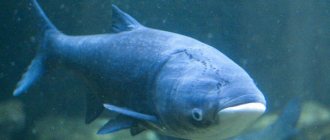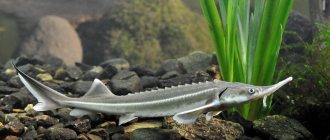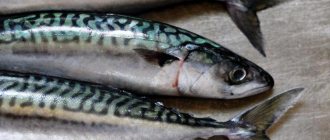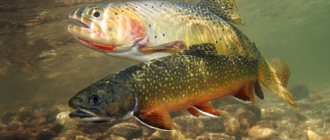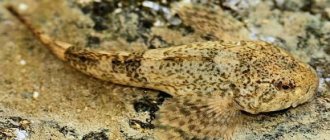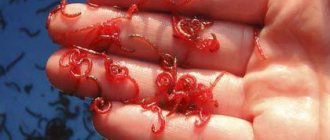Since the days of developed socialism, many Russians have waved their hands and wrinkled their noses at the mere mention of capelin. Ordinary people consider this small fish to be food for the marginalized, cat food, and an unpresentable survival product. And this is at a time when the northern outskirts of Europe and all of Asia are simply going crazy over this truly tasty and extremely healthy seafood delicacy.
Do you like capelin?
- Yes 98%, 411 votes
411 votes 98%411 votes - 98% of all votes
- No 1%, 5 votes
5 votes 1%
5 votes - 1% of all votes
- I don't eat fish 1%, 5 votes
5 votes 1%
5 votes - 1% of all votes
Total votes: 421
17.09.2019
×
You or from your IP have already voted.
Let’s look at the situation from all sides”: where it lives, its position in the fish hierarchy, recommendations and contraindications from nutritionists, culinary tips and techniques.
what capelin looks like
Capelin is a sea fish. Belongs to the smelt family. Capelin is a small fish, up to 25 cm. Capelin has a long and thin body. Average size – up to 15 cm. Life expectancy – up to 5 years.
Capelin is a beautiful fish; it has very small scales, which fall off during mass fishing, and we, as buyers, never see them. She also has many small teeth, and the oral cavity itself is small.
The sides and belly of capelin are silvery, and the back is greenish-brown. The fins are gray with a black edge. The pectoral fins are large, rounded, and the dorsal fins are set far back. Males are noticeably slimmer and more beautiful, their heads are sharper, as if stretched forward.
Possible harm of capelin and contraindications
Sea fish, in addition to a huge range of beneficial and medicinal properties, can also cause significant harm. People who have an allergic reaction to seafood or individual intolerance should avoid using the product.
Smoked capelin is dangerous because it contains many carcinogens that provoke the formation of cancerous tumors. In addition, this treatment is not able to rid the fish of parasites, which, if they enter the human body, can cause significant harm.
Fish caught in prohibited areas is considered dangerous to living organisms due to mercury accumulation and can cause significant harm to health, so the product should be discarded.
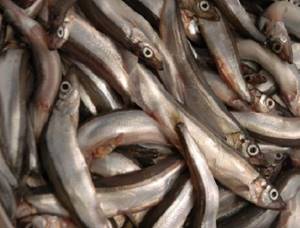
It is important to purchase a high-quality seafood product and pay attention to its freshness in order to protect yourself from poisoning.
where are capelin found?
Capelin is a purely sea fish. Lives in the open sea, in the upper layers of water, up to 300 meters (less often up to 700). Capelin is distributed in almost all northern ocean waters. The most numerous flocks can be found in the waters of the Barents Sea, near the Great Newfoundland Bank and Southern Labrador. The Atlantic coast of North America is also rich in capelin.
Capelin is widely distributed in the Arctic and northern parts of the Atlantic and Pacific oceans. It is also found in the North Atlantic - the Barents Sea (to Bear Island), the Norwegian Sea (to Spitsbergen), the Greenland coast, in the North Pacific Ocean (to Korea and Vancouver Island (Canada)).
Habitats
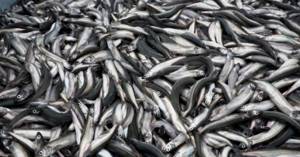
Some varieties of capelin can be found in the waters of the Arctic and also the Atlantic Ocean; quite a lot of this fish is caught in the Davis Strait; large populations have been spotted in the basins of Norwegian waters, as well as in the White, Kara, and Chukchi Seas. Capelin is also caught in Russia, in the waters of the Laptev and Barents Seas, and off the coast of Greenland.
In the north and in the Pacific waters, this species of fish is also caught, however, in these waters the habitat is significantly limited to the coast of Korea and Vancouver, Canada. In addition, capelin feels good in the Sea of Japan, as well as the Sea of Okhotsk and Bering Sea.
Capelin is an exclusively marine fish, the habitat of which consists only of salty reservoirs 200-300 m deep; in the rarest cases, fish swim to 700 m. Uek never swims in the waters of rivers or any other fresh water bodies; throughout its life it remains in open water, swimming to the shore only during spawning.
Shortly before spawning, capelin gather in very large schools, which head towards the shores. Depending on the habitat and type of fish, it can spawn from early spring to autumn. In bad weather, spawning fish are often thrown ashore; for example, in the Far East, the surface of the coast is sometimes covered with a layer of capelin washed up by the surf for several kilometers.
There are 2 subspecies of capelin:
- Villosus catervarius - Far Eastern capelin, (“uek”) , from the Bering Sea to the Korean Peninsula, occurs in the Lena delta, in the Sea of Okhotsk and Japan enters fresh water, along the American coast - from Alaska to Vancouver.
- Villosus villosus - European capelin . In the north it reaches the Bear and Nadezhda islands; in Murmansk it sometimes enters river mouths with the tide. Commercial species.

nutrition
It feeds mainly on zooplankton. In the waters of the Barents and Sea of Japan - crustaceans. Does not refuse shrimp larvae and herring eggs. A favorite delicacy is cod caviar. The diet of capelin is similar to that of herring. However, unlike herring, capelin continues to feed in winter. Capelin is active all year round.
Capelin has a lot of enemies. These include herring, cod, and even gulls and whales, which eat capelin in huge quantities.
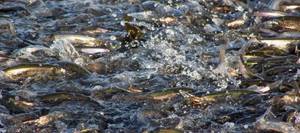
spawning and reproduction
Capelin is a schooling fish. The most numerous flocks can be found in the waters of the Barents Sea. Capelin comes to the shores only during the spawning period. Before breeding, capelin gather in huge schools, which gradually approach the shores, where yellow eggs are laid on the sandbank.
Schools of capelin going to spawn are followed by its sworn enemies that we have already mentioned - these are schools of cod, seagulls, seals and even whales. In strong winds, waves throw spawning capelin onto the shore. It happened that in the Far East the coastline for many kilometers was covered with a layer of capelin washed up by the surf. Not a pleasant picture.
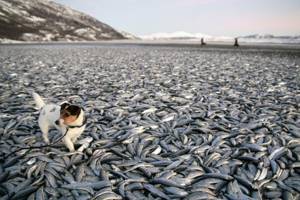
Depending on their habitat, capelin spawn at different times, from spring to autumn. Fertility is from 1.5 to 60 thousand eggs. Sticky capelin eggs settle to the bottom and the development of a new generation begins. Capelin larvae are very similar to herring larvae. They are long and have a low body. The warmer the water, the faster the fry appear. At first, the larvae develop near the coastline, but soon the current carries them out to sea.
The spawned capelin again goes to the open sea. Typically, capelin spawn once in their life, very rarely – twice. A lot of capelin die after spawning, being left washed up on the shore by strong winds.
Male fish are much larger than females. Their fins are larger and wider, and during the spawning period, males develop stripes on the sides, which consist of larger scales that form something like a pile.

Types and varieties
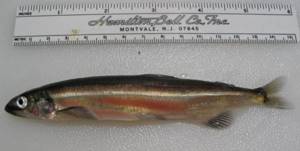
Some sources mention two types of capelin. The fish living in the Atlantic is Mallotus villosos Müller
, and living in the waters of the Pacific Ocean has its own name -
Mallotus villosus catervarius Pennatt
.
The local name for Pacific capelin is uek
.
Europeans and lovers of Japanese cuisine may be surprised to learn that
the same capelin is hidden capelin
When purchasing, you should pay attention to the fatness and color of the carcass. Larger light olive fish are most often females. Small capelin with a darker color are worse in taste and quality. If capelin is caught during the spawning period, it will turn out to be the most delicious, fatty and filled with valuable caviar or milt.
Capelin comes on sale in fresh frozen, dried, salted or pickled form. Hot and cold smoked fish are very tasty.
capelin fishing
The capelin catch as of March 2, 2015 amounted to 31.36 thousand tons, which is almost 2 times higher than the figure for the same date last year, or, more precisely, by 14.2 thousand tons. Massive catching of capelin is carried out with special “sink” seines. The cells of such a seine are very small
But if the capelin stays far from the shore, then another type of seine is used - a “purse seine”. Such a net allows you to capture a school of capelin right in the open sea.
At present, there are already new seines that have undergone successful experiments, but they have not yet taken root here, but are widely used by Western industrialists. The catch of capelin is carried out mainly in the spring, when it stays close to the coast.
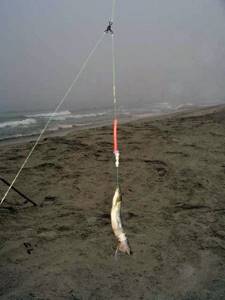
But it is still believed that the value of capelin as bait is more important. The cod fishery depends on it.
In river fishing, capelin is also widely used as bait. And although it bites better on live fish, it’s not bad at all on capelin. Fishermen claim that bites will become more frequent in places where there is at least a slight current. It shakes the capelin, throwing it from side to side, giving it the appearance of a living fish. According to river fishermen, capelin is similar in appearance to our river bleak, so pike take this bait well. The experience of fishermen suggests that with the help of capelin it is quite possible to catch several fairly weighty pike.
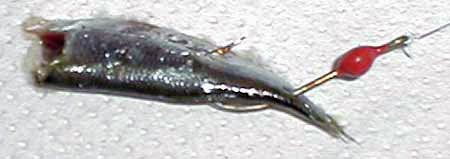
In addition to all that has been said, capelin is of great importance as food for game animals and valuable fish. In the history of capelin fishing, there were cases when a natural decline in its numbers in the Barents Sea was also accompanied by uncontrolled fishing (1980s), which ultimately led to bad consequences not only for capelin, but also for those species of fish and seabirds and animals who feed on it.
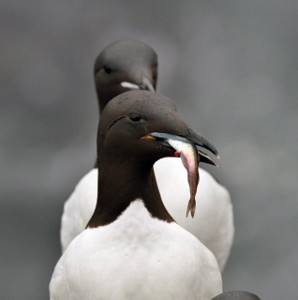
Of course, these lessons have been taken into account. Now the fishery is quite strictly regulated, and so far there is no reason to limit oneself in the consumption of this fish. Eat with pleasure!
Also, nowadays, during spawning, when capelin comes close to the shores, fans catch it with a net, and some even with an ordinary bucket, simply scooping up the water. It’s clear that you can’t call this fishing.
There is plenty of capelin floating in the seas, and in some years over half a million tons are mined. Capelin has quite an important commercial value.
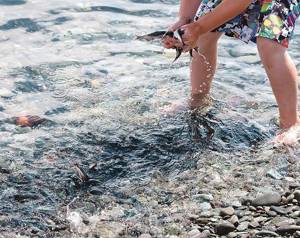
Along the shores of Greenland, local residents catch it in large quantities using improvised means (using a net and buckets) and eat it, and even dry it, making supplies for the winter. Along the shores of Iceland it is consumed fresh when there is a shortage of other fish. And off the coast of Norway and in Murmansk, as well as in Newfoundland, it is not recognized as food at all (it is believed that it smells strongly), but in huge quantities it is used as bait when catching cod, and other fish that come with it those caught are mainly haddock, catfish and even halibut.

It is used as bait in any form, even dried. In Norway there are even special small ships that specialize in freezing capelin, thereby creating a bait base. Such ships transport valuable bait to fishing grounds.
The markets of the European part of Russia receive capelin caught by Norwegian and Russian vessels in the Barents, Norwegian and North Seas. In the Far East you can find capelin from local fishing.
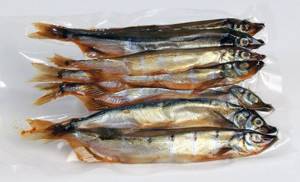
Interesting Facts
In the Russian city of Murmansk, a holiday is celebrated annually in honor of this fish. The festival takes place in early March. At this time, at city fairs you can try a huge variety of capelin dishes and purchase it in large quantities at a very attractive price.
Residents of Canada at the beginning of each summer do not have to go to the market or supermarket to pamper their loved ones with a delicious capelin dish. You just need to go ashore and collect as many fish as you need.
The Kola Peninsula is famous for the fact that a huge number of birds nest there. This is due to the fact that a large number of capelin live near the shore, which serves as the basis of the diet for the feathered inhabitants of the peninsula.
Summing up the article about capelin, I would like to say that this fish is an important part of the diet for all lovers of fish dishes. It is impossible to deny the beneficial properties with which it is so rich. Doctors recommend regularly eating capelan fish to prevent hypertension. At the same time, consuming capelin too often can lead to negative consequences.
benefits of capelin
Capelin is usually sold frozen and smoked. Also recently I have become fond of canned capelin caviar with various additives.
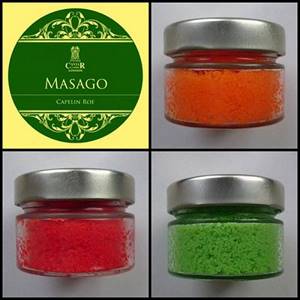
Capelin cooks very quickly because it has very little connective tissue. Capelin meat is rich in vitamins A, B and D, and also contains omega-3 and omega-6 fatty acids, which improve the functioning of the heart, brain, and even improve vision and remove excess cholesterol from the body.
Capelin meat contains many microelements useful for human life and health. This includes potassium, bromine, and fluorine, as well as sodium, magnesium and others. And phosphorus, which is also present in capelin, helps the human body absorb calcium more efficiently, and also takes an active part in the decomposition and removal of kidney stones.
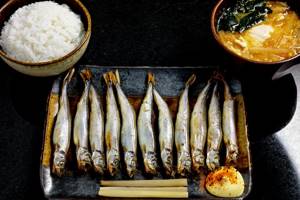
The presence of selenium in capelin has a beneficial effect on the human immune system, and also participates in the process of formation of hair and bone tissue. The iodine contained in capelin prevents the occurrence of inflammatory processes in the thyroid gland.
A large number of amino acids are also contained in capelin, a special place among them being threonine, lysine, cystenine and methionine.
Capelin contains microelements that reduce blood sugar levels and also contribute to the body's production of insulin. Therefore, it is especially recommended to consume capelin for people diagnosed with diabetes.
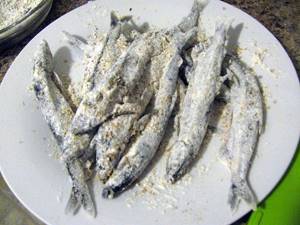
It must be said that regular consumption of capelin affects the prevention of such serious diseases as heart attack, stroke, osteoporosis, arthritis, thyroid diseases, diseases of the cardiovascular system and even (attention!) cancer.
Systematic consumption of capelin helps to cope with caries, normalizes visual processes, improves the condition of the skin, and reduces cholesterol levels.
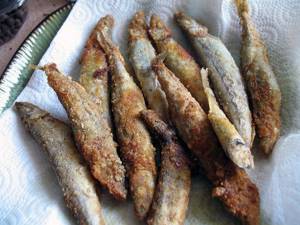
Despite the fatty, sweetish meat, capelin contains a fairly low amount of calories (approximately 157 Kcal per 100 g). And nutritionists advise including this fish in the diet of people who are overweight. Capelin copes well with the feeling of hunger, satisfying a person with its taste, and helps fight extra pounds.
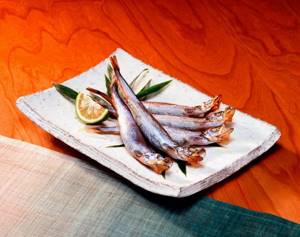
From all this said, the main conclusion arises. Capelin is truly a sea healer. You should not neglect this fish, because the wise proverb - “Small but bold” - is just about it.
Subtleties of use
100 g of raw capelin contains 158 kcal, of which 13-14 g are protein, the fat content is 11-1.5 g, and there are no carbohydrates in the product. The calorie content of a finished dish largely depends on its method of preparation. Thus, fried fish contains 248 kcal, while the amount of protein is 11.6 g, fat - 20 g, carbohydrates - 5-6 g.
Preparing fried capelin is quite simple; for this, the carcasses are salted, peppered, rolled in flour and fried in hot vegetable oil for 3-5 minutes on each side. Fried capelin has less calories - 100 g of the product contains only 120 kcal, while the BJU is 15/13/0 g.
Boil capelin in water along with onions, bay leaves, peppercorns and salt. First, bring the water to a boil, then add the carcasses and boil for another 5-7 minutes.
The calorie content of capelin baked in the oven is 125 kcal, of which 13.5 g of protein and 8 g of fat. To prepare fish according to this recipe, you should thoroughly wash the fish, gut it, rub it with spices, add salt and leave to soak for half an hour. After this, the fish is rolled in flour and baked in a preheated oven until cooked. The capelin should be removed when it is covered with a golden brown crust.
Anchovy is much fattier than sprat, and the chemical composition of anchovy fats is very different from the chemical composition of sprat lipids.
pickled capelin in mustard sauce
- capelin – 2 kg
- water – 600 ml
- salt – 3 tbsp. l.
- sugar – 1 tbsp. l.
- mustard – 3 tbsp. l.
- vinegar 9% – 40 ml
- bay leaf - to taste, but do not overdo it, otherwise it will be bitter
- peppercorns - to taste, but a pinch will be enough
- onion – 2 heads
- oil grows. – 2 tbsp. l.
preparing pickled capelin
- Thaw the capelin. Defrost on the bottom shelf of the refrigerator or on the table. Never put it in the microwave!
- Then wash well, peel, cut off the heads and tails. This will make the fish look prettier and more appetizing. Gut it.
- Then you need to cook the marinade. Add all the spices except vinegar to the water and bring to a boil. Remove from heat and only now add vinegar.
- Cool the marinade. Then pour it into a separate plate, add mustard and vegetable oil. Mix everything until smooth.
- Place the prepared capelin in the marinade and leave for 4-5 hours. You can leave it overnight.
- Then take a suitable container, preferably a square one. Cut the onion into rings and transfer the fish to them, alternating layer by layer and pouring the same marinade over everything.
- Cover tightly and refrigerate for at least a day. And then you can eat.
- Bon appetit.
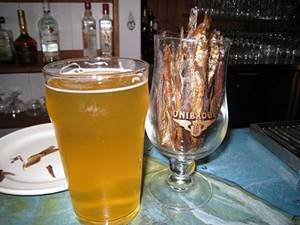
How to choose, store and cook
Only residents of coastal areas have the happiness of consuming freshly caught capelin. The rest of Russia's residents can only rely on fresh-frozen fish according to GOST. In such conditions, casting becomes more complicated (you can’t just smell the product), but the expert community has long ago developed a set of “signs of quality” for seafood:
- capelin should have clearly visible, non-cloudy black eyes;
- Regardless of the packaging format, fish carcasses should delight you with a smooth (undamaged) surface and uniform color. Uek is a very delicate fish: any violations in fishing and subsequent storage are reflected in the presentation (exterior);
- the most important quality criterion (and form factor of choice) is “shelf life”. No one has yet canceled state regulations and rules.
There is only one rule (applies to the casting of any goods): if you have the slightest doubt, refuse the purchase and purchase the product in a more reputable place.
The basic advantage of capelin is that it is excellent for preparing hot dishes or cold appetizers, goes well with most side dishes (a universal medium) and is quite tolerant of spices and herbs.
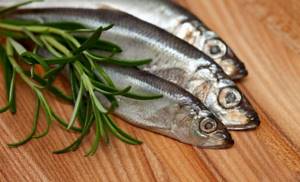
Experienced chefs recommend:
- there is no need to clean small fish of scales (“the armor” of this seafood does not interfere with preparation and consumption);
- Large capelin are gutted; the fins of small ones are only removed. It is important to understand here: gutting reduces fat content and worsens the quality of the finished dish;
- Do not overdo it with prolonged heat treatment. 20 minutes at temperatures up to 180 degrees is enough. Excessive technologies destroy the consistency of fish and kill the original taste;
- capelin loves lemon: citrus juice adds density to the white “meat” and perfectly “demonstrates” the consumer qualities of this small fish.
Shkara: recipe classics
Shkara is a traditional capelin dish invented by Black Sea fishermen. Fast, effective and tasty.
Preparation:
- place the washed fish in a saucepan;
- cover with chopped onions in half rings;
- repeat the procedure: several layers should form on the baking sheet;
- sprinkle the workpiece with chopped herbs (cilantro, parsley, dill are perfect), sprinkle with lemon juice, add bay leaf and cinnamon. The spicy environment enhances the overall flavor of the dish;
- pour boiling water over the composition, cover tightly with a lid and place in a preheated oven for 25 minutes;
- laying out on plates, pour broth from the saucepan;
- The delicacy is good with boiled potatoes or rice.
Ingredients (per serving / grams):
- fish: 200;
- bay leaf: 1 pc.;
- onions: 100;
- lemon juice: 25;
- cinnamon: 5;
- salt and black pepper: to taste.
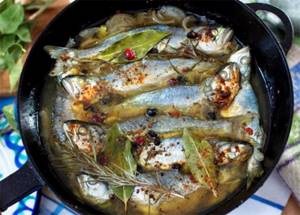
smoked capelin at home
- capelin – 500 g
- loose tea (without flavorings) – 3 tbsp. l.
- rice – 3 tbsp. l.
- sugar – 3 tbsp. l.
- salt, pepper, seasonings - to taste.
preparing home-smoked capelin
- Take an unnecessary saucepan. Cover the bottom with foil so that the sides remain. Pour regular rice, sugar and tea on top of the foil.
- Cover everything with foil, carefully wrap the sides, nothing should fall out or leak. Using a sharp object (skewer, toothpick, even a match), poke holes. The condition is that the holes should be small holes, but frequent. Try not to tear the foil while doing this. There shouldn't be any large holes.
- Well washed capelin (you can gut it if you wish) salt, pepper and season. Then place on perforated foil and cover tightly with a lid. This is a must. Tie the top with an old, unnecessary, and most importantly, wet towel. It will provide greater tightness.
- Place on the stove over high heat, after about a minute reduce to medium. Smoke the fish for about 20 minutes over medium heat.
- A strong fishy smell is guaranteed, but the result will be beyond praise.
Delicious, classic recipes
There are more than 100 recipes for dishes with capelin. Below are the most popular and simplest options.
In the oven with sour cream
Take 1 kg of gutted fish, 4 cloves of garlic, 150 ml of low-fat sour cream, salt and spices.
Cooking process: squeeze garlic onto washed capelin and mix. Let the product marinate for 15 minutes. Next, place the fish on a greased baking sheet, sprinkle with spices and salt, and pour in sour cream. Bake in the oven for 40 minutes at 200 degrees.
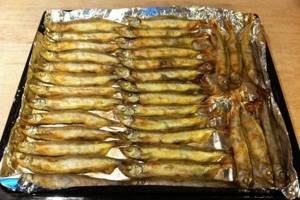
Monastic style
For the dish take: 0.5 kg of fish without giblets and bones, 200 grams of mushrooms, onion, 1 boiled egg, 1 tomato, 6 boiled potatoes in their jackets, 50 grams of cheese, 1 tablespoon of mayonnaise or full-fat sour cream, salt, 2 spoons vegetable oil.
Preparation: chop the onion and mushrooms and fry. Peel the potatoes, cut them into rings, and place them on the bottom of a deep dish. We make the next layer of mushrooms and onions, then fish, tomato pieces, chopped egg. Pour mayonnaise (sour cream) over the dish and sprinkle with grated cheese. Add a little water to the pan, cover everything with a lid, bake in the oven at 200 degrees for 25-30 minutes.
In a frying pan
This method of cooking allows you to get aromatic fish with a golden crust. However, there are no vitamins left in fried capelin; it does more harm than good. The product is saturated with fats and carcinogens. However, if you want fish cooked in a frying pan, use this recipe: in a deep bowl, mix 100 ml of water, 2 eggs, 100 grams of flour, 1/3 teaspoon of salt and 2 tablespoons of vegetable oil. We clean 900 grams of fish from the entrails and cut off the heads. Dip the carcass in batter and fry in a frying pan for 6 minutes on each side.

In a slow cooker with vegetables
For the dish you need: 0.5 kg of capelin peeled from giblets, 5 potatoes, 1 onion, 3 tomatoes, half a tablespoon of dry mustard, 1 tablespoon of olive oil, salt, spices, a glass of water.
We prepare it like this: salt the fish, sprinkle with spices. Cut vegetables into rings. Grease the multicooker container with oil and place the food in the following order: onions, tomatoes, potatoes, capelin. Dissolve mustard in water and pour into a dish. Close the multicooker and turn on the stew mode for 40 minutes.
On the grill
Capelin has less calories if you fry it on the grill or grill. For preparation you need marinade and 500 grams of fish. We make the first component like this: squeeze out 5 cloves of garlic, mix in a deep bowl with 1 teaspoon of chopped lemon zest, 1 bunch of finely chopped parsley, 1 tablespoon of lemon juice, salt and spices. Place the fish in the marinade and leave for 1 hour. Grill or grill for 3 minutes on each side.
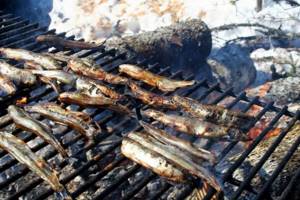
The video demonstrates other recipes.
How to salt and smoke capelin
To salt or smoke capelin, you can use the recipes below.
Salting in marinade
Components:
- 1 kg of uneviscerated carcasses;
- 6 bay leaves;
- 10 allspice peas;
- 1 liter of water;
- 80 grams of salt.
Cooking:
- Wash the fish and place it on a napkin to drain the liquid.
- Boil water, add salt, pepper, bay.
- Place the fish in a deep container and fill with cooled brine.
- We put the product in the refrigerator for a day.
- Sprinkle with herbs before use.
Smoking with tea at home
Ingredients:
- 1 kg of fish;
- 3 tablespoons each of black tea and rice.
Preparation:
- Take an old but strong saucepan. Line the bottom with foil to form sides, pour in rice and tea.
- Place another layer of foil on top and seal the food so that it doesn’t accidentally fall out. We use a toothpick to make holes in the improvised lid.
- Place capelin in a saucepan, cover and wrap with a towel, and place on medium heat.
- We smoke for 20-25 minutes.
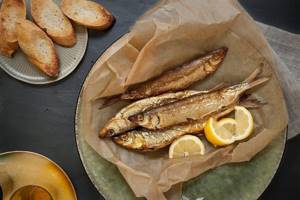
Making canned food from capelin
It is better to use cleaned fish carcasses. Canning involves long-term storage in finished form, so the beneficial substances are completely destroyed.
Ingredients:
- 1.5 kg of fish;
- 2 carrots;
- 3 onions;
- 3 tablespoons vegetable oil;
- salt, ground and allspice to taste;
- 150 grams of tomato paste.
Cooking steps:
- We gut the fish, cut off the head, and wash it.
- We clean the vegetables, grate the carrots on a coarse grater, cut the onion into half rings, and pour into a deep saucepan. Add oil, simmer for 20 minutes.
- Add seasonings, salt, capelin to the vegetables. Simmer for 5 minutes.
- Dilute the tomato paste with hot water until it reaches the consistency of thick juice and pour it into a saucepan.
- Continue cooking for another 2.5 hours.
- We eat canned food hot or cold.
